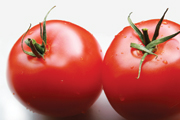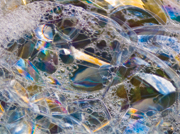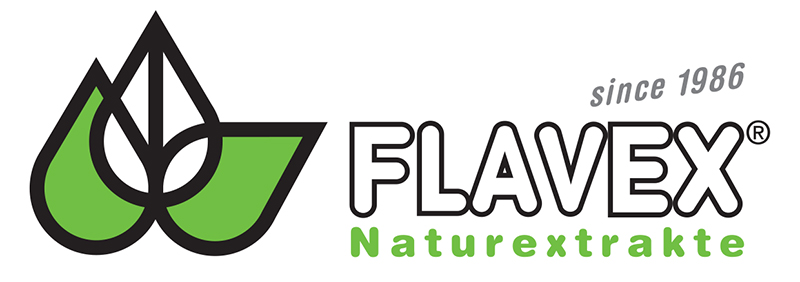“While 2009 brought its challenges for the industry, beauty brands and suppliers have continued to seek creative new ways to merge science, nature and sustainability for better results and more eco-friendly formulas and packaging,” says Nica Lewis, director of Mintel Beauty Innovation.
One of Mintel’s beauty themes for 2010 is ‘Nu Natural’, described as a new vision of natural that is less focused on certification and more focused on results, efficiency and safety. In 2010, beauty products will evolve from today’s trend towards organic ingredients, revisiting attributes like authenticity, provenance and local production, says Mintel Beauty Innovation. Claims like ‘free from’ and ‘sustainable’ are expected to appear in products that simultaneously contain synthetic actives like peptides, hyaluronic acid, ceramides or collagen. Beauty manufacturers are expected to further explore simple formulas, such as infusions and fluids, but will formulate them with a new generation of phytochemicals, anthocyanins and fermented actives.
Here SPC presents a range of new natural raw materials that epitomise the range of natural angles that suppliers are coming from.
Gattefossé Interesterification
Celebrating its 130th anniversary this year and demonstrating advances in oleochemistry and plant extraction know-how, Gattefossé has relaunchd Lipocire A, the result of the interesterification of two hydrogenated oils from the fruit of the palm tree, palm oil and palm kernel oil. Lipocire A is rich in saturated fatty acids with different chain lengths (from C8 to C18) and a melting temperature close to that of the skin. As a texturiser for emulsions and lotions, “its unique composition offers irreplaceable sensory benefit, with an easy, smooth spread and a melting feel during application,” leaving a comfortable film on the skin after application.
Lipocire A can also be used in lipsticks and pencils, giving good spreadability on the lips and around the eyes and melting smoothly on application.
The latest addition to the company’s Original Extracts range of waters extracted from plants is Original Extract Grape Bio, made by flash distillation and certified 100% organic by Ecocert. Other references in the range are: apple, bamboo, grape, organic grape, grapefruit, ginger, Kiwi, Lemon, organic lemon, lotus, orange, organic orange and rice.
Gattefossé is an RSPO (Roundtable on Sustainable Palm Oil) member.

Herbarom Affordable substitutes
Two new organic materials from Herbarom Laboratoire are designed to help formulators increase the organic percentage of their products. Described as affordable both are said to be possible substitutes for a significant part of the water phase of any cosmetic formulation.
Raspberries are among the fruits with the highest level of antioxidants and Aquacell Raspberry PrH is organic cellular water from fresh raspberry pulp. Aquacell Bio 100 PrG is organic wheat culm water.
It is gluten-free and is said to be suitable for formulations for fragile or reactive skin.
Both are transparent and slightly aromatic and both contribute to more than 99% in the calculation of the organic percentage in most organic standards, including Cosmébio and Cosmos.
Cosmetochem Botanical extracts
Cosmetochem has a number of new materials of natural origin.
Liposome Herbasec [INCI: Maltodextrin, plant extract, lecithin] is a novel range of standardised, liposomal-based, botanical extracts in a lyophilised powder form which are both preservative and solvent-free; Cosmetochem says unsaturated phospholipids have been shown to be excellent penetration enhancers and these are the ones used here. Current extracts, which are water dispersible up to 5%, include green tea, white tea, white hibiscus, aloe vera and guarana.
Meanwhile Herbasol Ecoverte [INCI: Glycerin, aqua, plant extract] is a range of Ecocert validated extracts based on Ecocert certified glyceine. The current range of preservative-free extracts includes raspberry, mango, lavender, lime tree blossom, elderflower, vanilla, green tea and white tea, but customised extracts can be requested through the company’s website (www.cosmetochem.com).
Also new is a Natural AHA Complex [INCI: Maltodextrin, citric acid, tartaric acid, silica, lactic acid, aqua] of three naturally-derived alpha hydroxy acids in white powder form, formulated to deliver 20-30% total acids (as citric acid) so can be used as a gentle exfoliant for skin and scalp. Again this is preservative and solvent-free.
Grant Industries Petroleum style volatility
Vegelight 1214LC from Grant Industries is an Ecocert approved volatile, colourless and odourless alkane sourced from vegetable oils. Grant says its volatility properties are similar to petroleum-derived isododecane and synthetically-derived cyclomethicones.
A variety of cosmetic and personal care uses are suggested where enhanced solubility and fast spreading to promote active delivery and for a quick drying and non-greasy aesthetic are required, including skin care, sun care, AP/deos, colour cosmetics and hair care.

Lessonia Antioxidant activity
LycoMega [INCI: Solanum lycopersicum seed oil & caprylic/capric triglyceride & vaccinium cacrocarpon seed oil & helianthus annus seed oil & tocopherol] from Lessonia contains titrated lycopene (80ppm) extracted by cold process from tomato seeds.
Lycopene is an antioxidant and blocks the damaging effects of free radicals, protecting the keratinocytes exposed to UVB. Its omega 6 and omega 3 content are said to be at the exact ratio (5:6) needed by human cells, providing anti-inflammatory effects by reducing systhesis of prostaglandins and other inflammatory substances.
Using LycoMega is said to strongly inhibit UVB induced apoptosis, and that inhibition is believed to be directly linked to the dosage – Lessonia says LycoMega has the strongest antioxidant activity of all natural antioxidants. The recommended usage level is 2-5% and the oil soluble material is said to be easy to formulate. Produced by a natural, solvent-free process, the material is also preservative-free and is suitable for use in organic products.

Noveon Consumer Specialties Surfactant specialities
The Lubrizol Corporation’s Noveon Consumer Specialties business has introduced three new vegetable-derived surfactants for use in formulations looking for ‘natural’ claims: Chemccinate LSC-K Surfactant, Chembetaine ACB Surfactant and Sulfochem CS-BZ Surfactant.
Used as a secondary surfactant, Chemccinate LSC-K Surfactant [INCI: Disodium lauryl sulfosuccinate] is said to act as an anti-irritant and is compatible with anionic, non-ionic and amphoteric surfactants in a wide range of cleansing products. It can be used as a primary surfactant in sulphate-free formulations.
Amphoteric surfactant Chembetaine ACB Surfactant [INCI: Coco-betaine] is said to help formulators develop cleansing products requiring a high vegetable content and no animal derivatives. It is compatible with anionic, non-ionic and other amphoteric surfactants. Formulated with anionics it is said to reduce imitation while building good viscosity and boosting foam in hard and soft water. It also offers good stability in challenging high-electrolyte solutions, enabling solubilisation of other surfactants.
Lubrizol says Sulfochem CS-BZ Surfactant [INCI: Sodium coco-sulfate] only comes from coconut fatty alcohol and contains no palm kernel derivatives. It can be used in a wide range of cleansers where a high vegetable content is required and is said to be a cost effective anionic option that formulates easily with secondary surfactants when high viscosities and good foaming are needed.
Laboratoires Expanscience Moisturise & soothe
Laboratoires Expanscience promises reinforcement of the skin’s barrier function and a soothing action for dry skin from its Ecocert certified Soline Bio [Helianthus annus seed oil unsaponifiables].
The ingredient is an oily active rich in unsaponifiable molecules. It is said to stimulate the synthesis of key lipids in the skin, strengthening the intercorneocyte cement and providing good moisturisation. It is also said to be a soothing ingredient. Both the moisturising and soothing activities are said to be directly associated with the ingredient’s ability to activate the PPARa receptor of keratinocytes.
Elevance Renewable Sciences Waxing lyrical
Elevance Renewable Sciences has developed a new line of natural, vegetable-based waxes for use in semi or automated candle filling lines which provide an environmentally friendly alternative to multi-component paraffin blends. The product is said to avoid the fat bloom and cracking issues sometimes associated with vegetable-based waxes.
“This advancement surpasses any wax product currently on the market,” says K’Lynne Johnson, ceo, Elevance. “Our unique technology makes it possible to continually drive innovation and create high performing bio-based materials.”

Flavex Supercritical phytosterols
Supercritical CO2 extraction specialist Flavex Naturextrakte now has an organic certified Soy Germ-to Extract rich in phytosterols and said to be ideally suited to cosmetics.
Soy germs have an oil content of just 6-8% so Flavex says this is best extracted with supercritical CO2. It contains more than 70% polyunsaturated omega-6 and omega-3 fatty acids and an unusually high content of tocopherols and phytosterols, the special feature being the particularly high phytosterol content of 5-8%.
Other recent organic launches from Flavex are millet and wheat bran extracts. Millet contains milacin, a pentacyclic triterpene related to phytosterols, a secondary plant ingredient which encourages cell division and an important cell membrane component with protective and anti-ageing efficacy.
Supercritical Wheat Bran Extract (organic) is said to be mainly of interest because of the 2.5% phytosterol, 0.3% tocopherol and 0.3% tocotrienol content and the presence of alkylresorcinols, said to inhibit subcutaneous fat tissue, making them useful in anti-cellulite applications.



